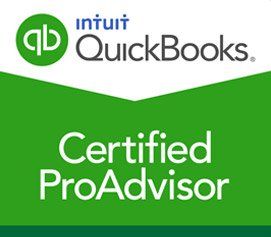529 College Savings Account Withdrawals And Taxation
529 college savings account withdrawals are a common practice for many college graduates. While this is true, it may not be the best method to save for school. Withdrawing from a 529 plan early may cause problems when you need to sort out your finances after a student’s undergraduate years.
So, let's discuss 529 college saving account withdrawals and the taxation process.

What is a 529 College Saving Account?
529 College Saving Account is a special investment account designed for parents to save for their children's future education. The account works like a savings account, but it grows tax-free and can be used for any qualified higher education expenses.
The money in the account is exempt from income taxes as long as it is used only for qualified higher education expenses. Qualified expenses include:
Tuition, room, and board at an eligible postsecondary institution.- Certain books, supplies, and equipment.
- Computers and their software
A 529 plan offers a way to help your child pay for college without taking on debt or putting your retirement at risk.
For more insights on retirement and college savings, set up a
free one hour consultation with a YokeTax professional.
Dipping Into Taxation
If you are currently studying at a university, your college savings account is probably one of the greatest financial assets you own.
But before you start blowing through your nest egg, be aware that withdrawing money from your 529 plan can be subject to taxation if the money is remitted by someone other than the custodian. This is true
even if you use the proceeds for qualified higher education expenses.
Withdrawals from a 539 college savings account are taxable unless they are made according to the terms of the agreement with the savings institution. If this is not specified in an agreement, then withdrawals are usually taxed when they are made. You will want to check with your financial institution about how withdrawals will be taxed in your particular situation.
529 Multiple Payment and Withdrawal Options
The most common way to access your 539 College Saving Account is by making a withdrawal. You can also choose to make a transfer between accounts or to deposit money into your account.
You usually have several payment options: cheque, direct deposit, electronic transfer, pre-authorized debits (from a credit card), or online banking. If you choose electronic transfers, the funds will be transferred within 24 hours of your request.
But, the most important thing for you to know in a 529 Saving Account is that both the owner and the beneficiary can easily withdraw funds from the account.
The account holder or the owner can easily cut a check and withdraw money at any time, but if the beneficiary wants to withdraw funds, the owner will name them for withdrawal.
Things to Consider
Withdrawals from 529 supported with the custodial fund cannot be taxed as a distribution, depending on the type of 529 plan you're using.
If your withdrawal is from a 529 plan that uses the "contribution method," the amount withdrawn will not be subject to federal income tax. If your withdrawal is from a 529 plan that uses the "income-based method," the amount withdrawn may be subject to federal income tax plus state and local income taxes, if applicable.
Even if you are not subject to federal income tax, you still need to pay state and local taxes on withdrawals from 529 plans.
If you are concerned about paying taxes on withdrawals from 529 plans, it might be better to
consult a tax professional on this matter and get detailed guidance.
The IRS Is Watching You During Withdrawals
The IRS is watching you during withdrawals from 529 college savings accounts. So, if you are trying to decide between withdrawing funds from a 529 college savings account and an IRA, the IRS might be able to help you out.
The IRS says you can withdraw money from your 529 college savings account without paying any taxes or penalties,
but only if that amount represents your original contributions. So, for example, if your mother placed $5,000 initially, and the 529 grew to $7,500, you can withdraw that first $5,000.
You want to keep track of your expenses and ensure you don't exceed the amount of money in your account, but the IRS won't come after you for taking money out.
If you take any amount out of your 529 college savings account during the year when you are not enrolled in the college, it's considered a taxable event and requires paying income tax on it or giving it back. The IRS gives more guidance on 529s in this
news release.
When the IRS Can Trigger Taxes
What happens if you take out more than the allowed amount? You will owe the IRS additional taxes on that money.
Continuing with our example, the initial deposit is $5,000. If you take out, say $6,000, then that extra $1,000 you took from your 529 is considered a distribution. This makes it subject to a 10% penalty tax
on top of the regular income taxes.
Other Withdrawals May Be Taxable
One of the most common questions college savers have is whether or not their withdrawals are taxable. While there are some circumstances in which it might be, most people's primary assumption is that their withdrawals will be tax-free. This isn't always true.
There are a few instances where withdrawals from 529 accounts can be taxable even in times when college fees are incurred, even if you are using the money for qualified higher education expenses. For example:
Using your withdrawals to pay for kindergarten through grade 12 education expenses (or higher education expenses). They may still be taxable if they exceed the
adjustable account limit during the year, which doesn't include any interest earned on those funds.
Withdrawals for Non-Educational Purposes
When you withdraw money from your 539 College Savings Account, you can take out only what you need. However, there is a catch; if you do not use the withdrawal for education, it will be taxed at 10 percent.
To avoid this penalty tax, make sure you spend all your withdrawals from your 539 College Savings Account on qualified educational expenses like tuition payments and books.
Conclusion
If you are looking for ways to save for college without paying taxes on the money you have saved, consider opening up a 529 plan. This type of account allows parents to save for their kids' future education without paying unnecessary taxes on the money they have saved up over time.
Set up a
free one hour consultation with a YokeTax professional to learn how to maximize your benefit.



